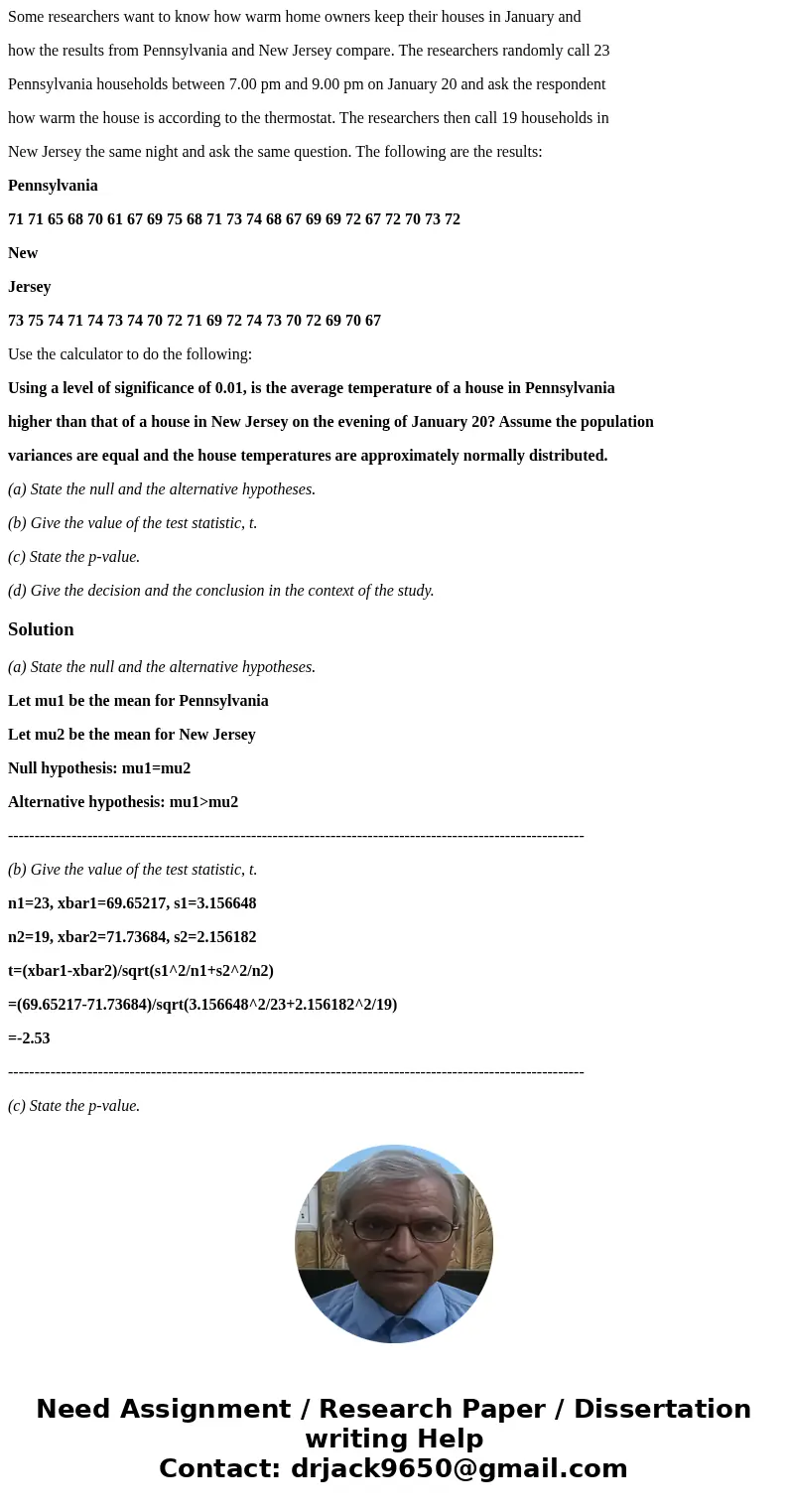Some researchers want to know how warm home owners keep thei
Some researchers want to know how warm home owners keep their houses in January and
how the results from Pennsylvania and New Jersey compare. The researchers randomly call 23
Pennsylvania households between 7.00 pm and 9.00 pm on January 20 and ask the respondent
how warm the house is according to the thermostat. The researchers then call 19 households in
New Jersey the same night and ask the same question. The following are the results:
Pennsylvania
71 71 65 68 70 61 67 69 75 68 71 73 74 68 67 69 69 72 67 72 70 73 72
New
Jersey
73 75 74 71 74 73 74 70 72 71 69 72 74 73 70 72 69 70 67
Use the calculator to do the following:
Using a level of significance of 0.01, is the average temperature of a house in Pennsylvania
higher than that of a house in New Jersey on the evening of January 20? Assume the population
variances are equal and the house temperatures are approximately normally distributed.
(a) State the null and the alternative hypotheses.
(b) Give the value of the test statistic, t.
(c) State the p-value.
(d) Give the decision and the conclusion in the context of the study.
Solution
(a) State the null and the alternative hypotheses.
Let mu1 be the mean for Pennsylvania
Let mu2 be the mean for New Jersey
Null hypothesis: mu1=mu2
Alternative hypothesis: mu1>mu2
-------------------------------------------------------------------------------------------------------------
(b) Give the value of the test statistic, t.
n1=23, xbar1=69.65217, s1=3.156648
n2=19, xbar2=71.73684, s2=2.156182
t=(xbar1-xbar2)/sqrt(s1^2/n1+s2^2/n2)
=(69.65217-71.73684)/sqrt(3.156648^2/23+2.156182^2/19)
=-2.53
-------------------------------------------------------------------------------------------------------------
(c) State the p-value.
It is a right-tailed test.
The degree of freedom =n1+n2-2=23+19-2 =40
So the p-value= P(t with df=40 >-2.53) =0.9923 (from student t table)
-------------------------------------------------------------------------------------------------------------
(d) Give the decision and the conclusion in the context of the study.
Since the p-value is larger than 0.01, we do not reject the null hypothesis.
So we can not conclude that the average temperature of a house in Pennsylvania is
higher than that of a house in New Jersey on the evening of January 20


 Homework Sourse
Homework Sourse